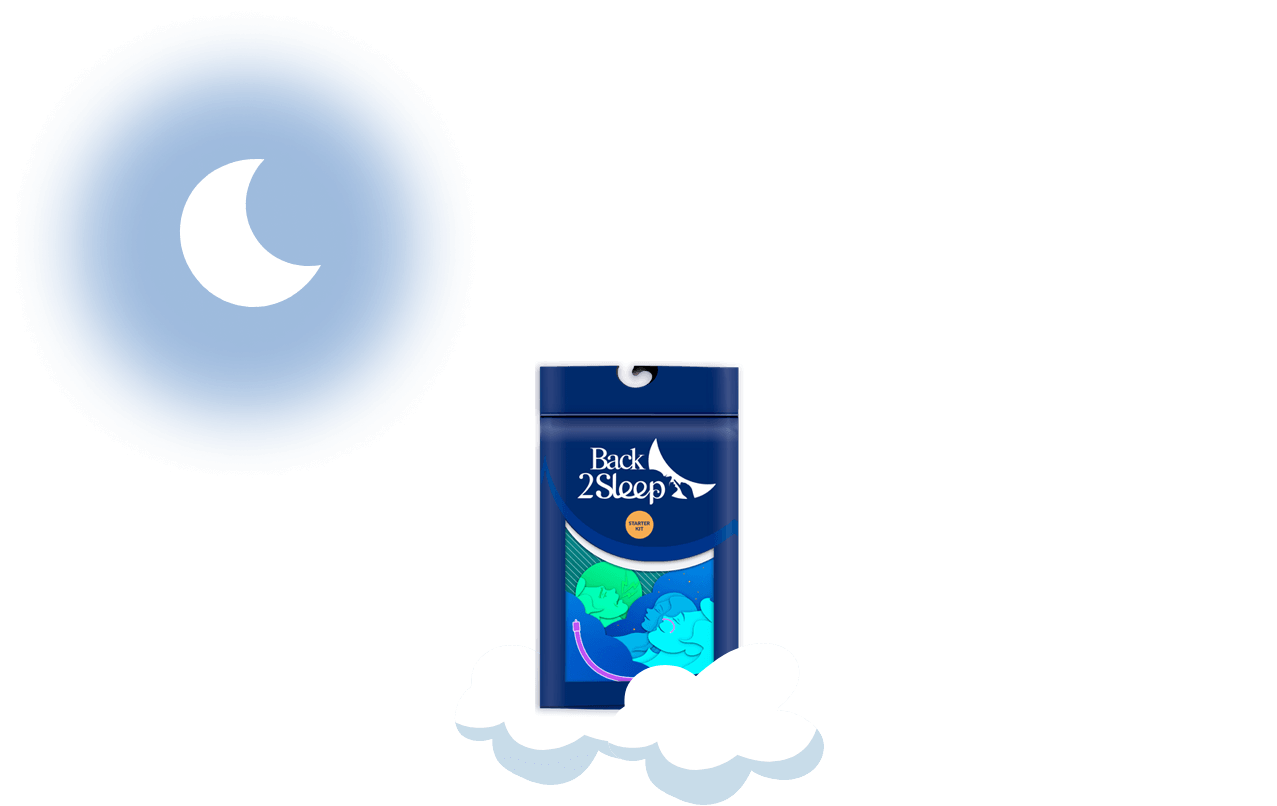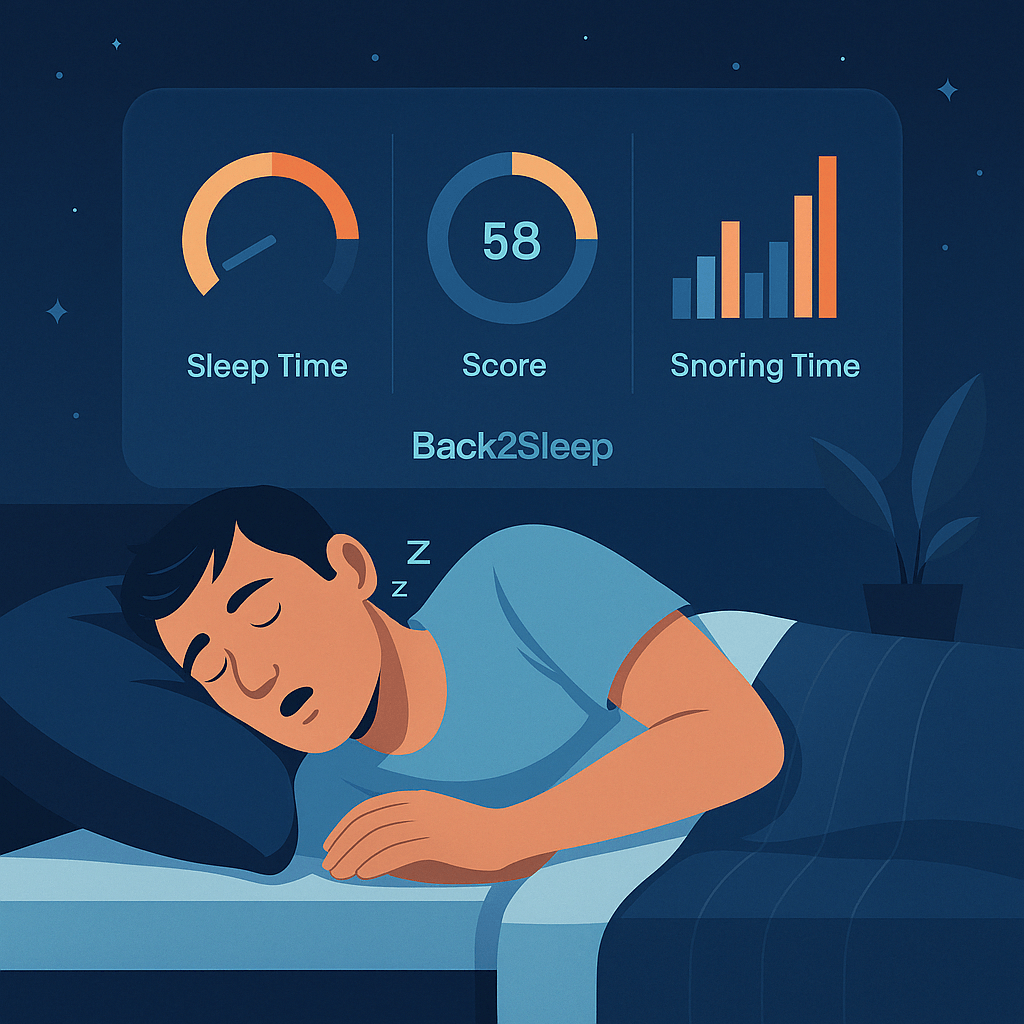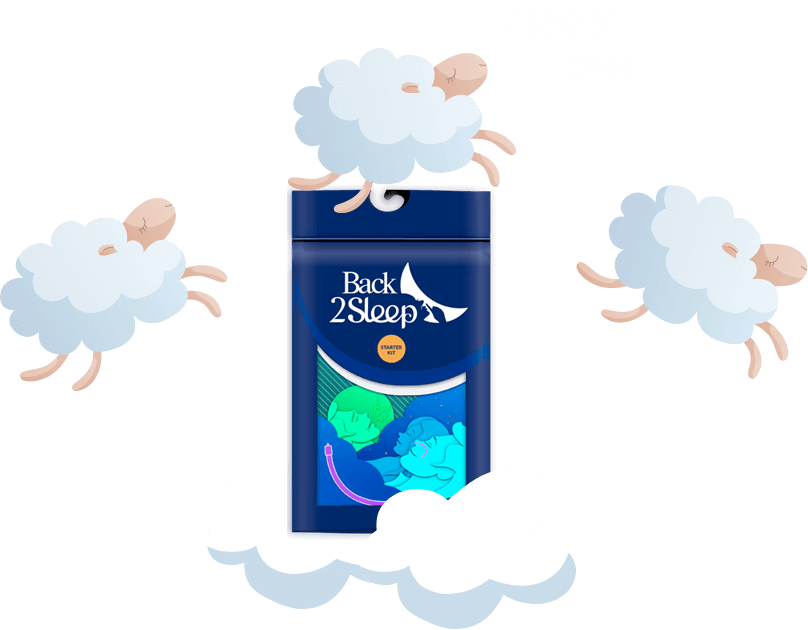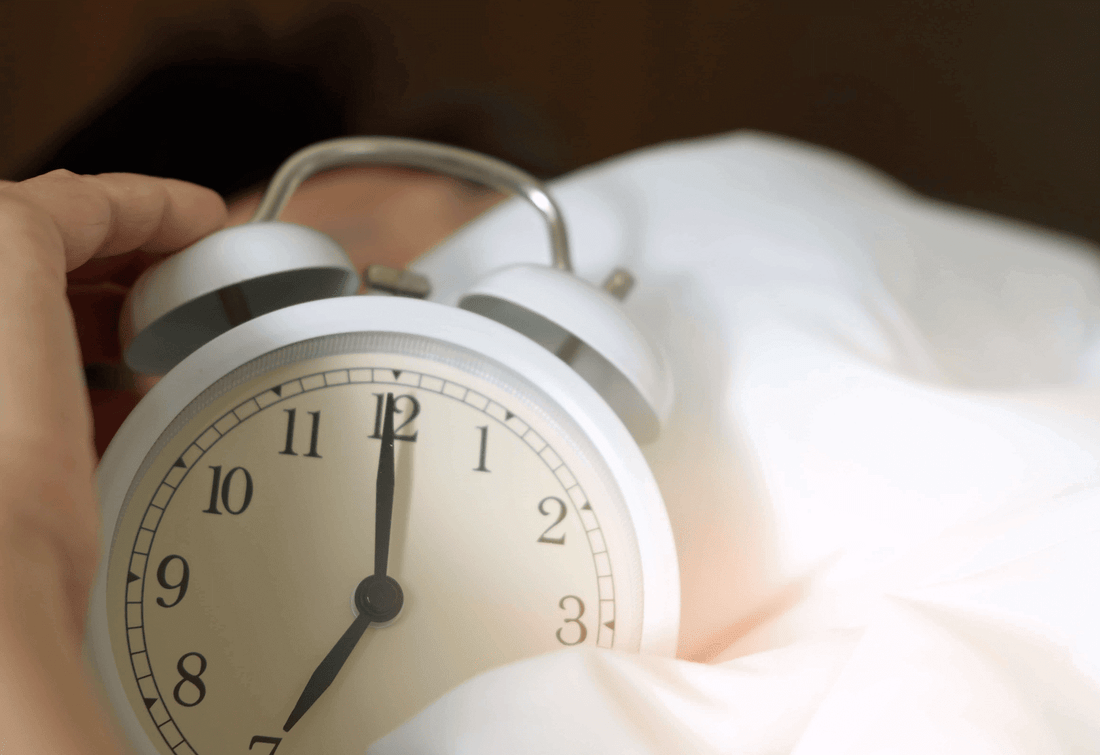Micro-Awakenings: Understanding Sleep Interruptions That Destroy Your Rest
Discover how brief sleep disruptions fragment your sleep cycles, cause chronic fatigue, and impact daily performance—plus proven solutions from lifestyle changes to medical devices that restore continuous, restorative sleep.
Micro-awakenings are brief but devastating sleep interruptions that jolt you from deep, restorative sleep stages to partial or complete wakefulness, sometimes lasting only 3-15 seconds—so short you may not consciously remember them, yet they profoundly disrupt sleep architecture and prevent the cellular repair, memory consolidation, and hormonal regulation that occur during uninterrupted rest. The primary culprit? Respiratory disorders like obstructive sleep apnea where your brain repeatedly wakes you to restore breathing, but environmental factors, stress, medications, and lifestyle habits also contribute. The solution involves identifying your specific triggers through sleep studies, then implementing targeted treatments ranging from CPAP therapy to innovative devices like the Back2Sleep intranasal orthosis that maintains open airways without bulky machinery.
Understanding what causes micro-awakenings and how they damage your health is essential for reclaiming the deep, continuous sleep your body desperately needs for optimal physical and cognitive functioning.
Micro-Awakenings: Essential Facts at a Glance
| Key Aspect | Essential Information |
|---|---|
| Definition | Brief sleep interruptions (3-15 seconds) that transition you from deep sleep to partial/full wakefulness, disrupting sleep cycle continuity |
| Primary Cause | Respiratory disorders—sleep apnea and severe snoring causing oxygen drops that trigger protective awakening responses |
| Environmental Triggers | Noise pollution, light exposure, improper room temperature, uncomfortable bedding, partner movements |
| Main Symptoms | Chronic fatigue, concentration problems, irritability, morning headaches, accident risk, metabolic dysfunction |
| Diagnostic Method | Polysomnography (sleep study) recording brain waves, breathing, heart rate, eye movements to identify disruption patterns |
| Health Impact | Prevents deep sleep phases essential for recovery, increasing risks of obesity, diabetes, cardiovascular disease, cognitive decline |
| Treatment Options | Lifestyle modifications, sleep hygiene optimization, CPAP therapy, oral appliances, intranasal devices, medications (limited use) |
| Prevention Strategy | Address underlying causes (treat apnea, optimize environment), maintain sleep schedule, avoid stimulants/alcohol before bed |
Micro-Awakenings by the Numbers
Primary Cause: Respiratory Disorders and Airway Obstruction
Respiratory disorders, particularly obstructive sleep apnea (OSA), represent the leading cause of pathological micro-awakenings, accounting for 60-80% of cases in patients presenting with chronic sleep fragmentation.
The Sleep Apnea-Arousal Mechanism
During obstructive sleep apnea episodes, the upper airway collapses completely or partially, creating a mechanical blockage that prevents airflow despite continued breathing efforts from the diaphragm and chest muscles. As this obstruction persists for 10 seconds to over a minute, your blood oxygen levels drop (hypoxemia) while carbon dioxide accumulates (hypercapnia).
Your brain's survival mechanisms detect this dangerous condition and initiate an emergency arousal—briefly transitioning you from deep sleep to lighter sleep or wakefulness. This arousal tightens throat muscles, restores muscle tone, and reopens the airway, allowing breathing to resume with characteristic gasping or choking sounds.
⚠️ The Vicious Cycle of Apnea Arousals
Each apnea episode triggers a protective micro-awakening that restores breathing—but also prevents progression into deep, restorative sleep stages. In moderate-to-severe OSA, this cycle repeats 15-30+ times per hour throughout the night, resulting in:
→ Severely fragmented sleep architecture with minimal time in deep (N3) and REM sleep
→ Chronic oxygen desaturation causing cellular stress and inflammation
→ Elevated sympathetic nervous system activity increasing blood pressure
→ Hormonal disruption affecting metabolism, appetite regulation, and stress response
Severe Snoring as an Arousal Trigger
Heavy snoring—even without complete apneas— causes micro-awakenings through a similar but less severe mechanism called Upper Airway Resistance Syndrome (UARS). The partial airway narrowing creates increased breathing effort that triggers brief arousals to restore adequate airflow.
While individuals with UARS maintain oxygen levels better than OSA patients, the frequent arousals produce identical sleep fragmentation and daytime symptoms including excessive sleepiness, cognitive impairment, and morning headaches. Learn more about sleep apnea mechanisms and treatment options.

Environmental Triggers: How Your Bedroom Disrupts Sleep
External environmental factors significantly contribute to micro-awakening frequency, even in individuals without underlying sleep disorders. Your brain's sensory systems remain partially active during sleep, monitoring for potential threats—meaning inappropriate bedroom conditions can trigger protective arousals.
Noise Pollution and Acoustic Disturbances
Traffic Noise: Vehicle sounds, sirens, and urban activity create sudden volume changes that trigger startle responses—studies show noise levels above 35 decibels significantly fragment sleep.
Household Sounds: Appliances cycling on/off, plumbing noises, HVAC systems, creaking floors, and family member movements disrupt sleep continuity throughout the night.
Partner Disturbances: Bed partner snoring, movement, bathroom trips, and sleep talking create micro-arousals—partners of severe snorers experience 20-30 arousals nightly.
Electronic Alerts: Phone notifications, text alerts, email sounds, and smart device beeps interrupt sleep cycles—even when consciously ignored, they trigger measurable brain arousals.
Solution strategies: White noise machines masking disruptive sounds, earplugs reducing volume by 20-30 decibels, soundproofing modifications (heavy curtains, door seals, acoustic panels), "do not disturb" modes on all devices during sleep hours.
Light Exposure and Circadian Disruption
Light penetrating eyelids during sleep triggers arousals through direct effects on photoreceptors that communicate with the brain's arousal centers, even during sleep. Research demonstrates that light levels as low as 5-10 lux (equivalent to a nightlight) can fragment sleep architecture.
Common problematic sources: Streetlights through inadequate window coverings, digital clock displays, LED indicator lights on electronics, smartphone screens, bathroom light for nighttime trips, early sunrise during summer months.
Optimization approach: Install blackout curtains or blinds blocking 99% of external light, cover or remove all electronic displays, use motion-activated dim red nightlights (least disruptive wavelength) for safety, wear sleep masks if complete darkness isn't achievable.
Temperature Extremes and Thermal Comfort
Core body temperature must drop 2-3°F for sleep initiation and maintenance—ambient temperatures that interfere with this process trigger frequent micro-awakenings. Optimal bedroom temperature ranges between 60-67°F (15-19°C) for most individuals.
🌡️ Temperature-Related Arousal Mechanisms:
Too Hot (>75°F): Prevents core temperature decline, increases night sweats, reduces deep sleep percentage, causes frequent arousals attempting to cool body through position changes
Too Cold (<60°F): Triggers shivering thermogenesis, increases muscle tension, diverts blood flow to core organs, creates arousal-inducing physical discomfort
Optimal Solution: Programmable thermostat maintaining 65-67°F, breathable bedding materials (cotton, bamboo, linen), moisture-wicking sleepwear, bedroom fan for air circulation
Bedding Quality and Physical Comfort
Inadequate mattress support and poor-quality bedding create pressure points, improper spinal alignment, and thermal discomfort that collectively increase arousal frequency. Research shows that replacing a 9-10 year old mattress significantly reduces micro-awakenings and improves sleep quality scores.

Additional Causes: Psychological, Pharmacological, and Lifestyle Factors
Stress, Anxiety, and Psychological Disorders
Chronic stress and anxiety disorders fundamentally alter sleep architecture through hyperactivation of the hypothalamic-pituitary-adrenal (HPA) axis and elevated cortisol levels that maintain heightened arousal throughout the night.
Individuals with generalized anxiety disorder (GAD), post-traumatic stress disorder (PTSD), or major depressive disorder experience significantly increased micro-awakening frequency—often 2-3 times higher than healthy controls—due to:
- Hypervigilance: Maintained threat-monitoring systems preventing deep sleep immersion
- Rumination: Intrusive thoughts activating cortical arousal during sleep transitions
- Autonomic dysregulation: Elevated sympathetic tone increasing heart rate variability and arousal susceptibility
- Nightmare activity: REM sleep disruptions causing complete awakenings from distressing dream content
Medication-Induced Sleep Fragmentation
| Medication Class | Examples | Arousal Mechanism |
|---|---|---|
| Corticosteroids | Prednisone, dexamethasone, hydrocortisone | Activate HPA axis, suppress melatonin, increase cortisol leading to heightened arousal and sleep fragmentation |
| Stimulating Antidepressants | SSRIs (fluoxetine, sertraline), SNRIs (venlafaxine) | Increase serotonin/norepinephrine disrupting REM sleep, causing frequent awakenings and vivid dreams |
| Beta Blockers | Propranolol, metoprolol, atenolol | Suppress melatonin production, alter sleep architecture, trigger nightmares causing arousals |
| Chemotherapy Agents | Various cancer treatments | Cause nausea, pain, anxiety, hormonal changes collectively fragmenting sleep throughout night |
| Decongestants | Pseudoephedrine, phenylephrine | Stimulate sympathetic nervous system maintaining elevated arousal threshold preventing deep sleep |
Substance Use: Caffeine, Alcohol, and Nicotine
Caffeine consumption within 6 hours of bedtime significantly increases micro-awakening frequency through adenosine receptor antagonism that maintains elevated arousal. Individual metabolism varies widely—some require 12+ hour caffeine avoidance for optimal sleep.
Alcohol paradoxically disrupts sleep despite initial sedative effects. While promoting faster sleep onset, alcohol metabolism during the night creates rebound arousal effects, REM sleep suppression, and increased micro-awakenings particularly in the second half of sleep. Additionally, alcohol's muscle-relaxant properties worsen sleep apnea severity, compounding arousal frequency.
Nicotine's stimulant properties elevate heart rate, blood pressure, and cortical arousal—smokers experience 40-50% more micro-awakenings than non-smokers. Nighttime nicotine withdrawal in heavy users also triggers arousals between 3-5 AM.

Devastating Symptoms and Long-Term Health Consequences
Repeated micro-awakenings throughout the night prevent the sustained deep sleep required for essential physiological processes including cellular repair, immune function, memory consolidation, hormonal regulation, and metabolic homeostasis. The cumulative effects manifest across multiple body systems.
Immediate Daytime Symptoms
Excessive Daytime Sleepiness: Overwhelming urge to sleep during normal activities despite spending adequate time in bed—measured by Epworth Sleepiness Scale scores >10 indicating pathological sleepiness.
Cognitive Impairment: Difficulty concentrating, slowed reaction times (equivalent to 0.05-0.08% blood alcohol), working memory deficits, reduced problem-solving abilities affecting work/school performance.
Mood Disturbances: Irritability, emotional lability, reduced frustration tolerance, increased anxiety/depression symptoms—sleep fragmentation affects emotional regulation networks in prefrontal cortex.
Morning Headaches: Tension-type or vascular headaches upon awakening caused by oxygen desaturation, carbon dioxide retention, and disrupted sleep architecture preventing normal brain recovery.
Physical Fatigue: Persistent exhaustion, reduced exercise tolerance, muscle weakness, decreased stamina—insufficient deep sleep impairs growth hormone release and muscle recovery processes.
Microsleep Episodes: Brief unintentional sleep periods (1-30 seconds) occurring during monotonous activities like driving—increases motor vehicle accident risk by 2-7 times compared to well-rested individuals.
Long-Term Health Complications
⚠️ Chronic Micro-Awakening Health Risks:
Cardiovascular Disease: Sleep fragmentation increases hypertension risk by 30-40%, elevates heart attack and stroke risk through chronic sympathetic activation and inflammation
Metabolic Dysfunction: Disrupted glucose metabolism, insulin resistance, obesity risk increased 55% (through leptin/ghrelin dysregulation affecting appetite), type 2 diabetes development
Immune Suppression: Reduced natural killer cell activity, impaired vaccination responses, increased infection susceptibility, prolonged illness recovery times
Cognitive Decline: Accelerated neurodegeneration, increased dementia/Alzheimer's risk (disrupted glymphatic clearance during fragmented sleep), hippocampal volume loss
Mental Health: Major depression risk doubled, anxiety disorder development, mood disorder exacerbation, reduced psychotherapy treatment response
Quality of Life: Relationship strain, reduced work productivity ($63 billion annual US economic impact), decreased life satisfaction, social withdrawal

Why Back2Sleep Effectively Eliminates Respiratory Micro-Awakenings
Targets Root Cause
Physically maintains airway patency at the soft palate—preventing the collapse that triggers oxygen drops and protective arousals throughout the night.
Eliminates Apnea Events
Over 92% of users experience significant reduction in apnea episodes and associated micro-awakenings from night one, restoring deep sleep phases.
Silent and Comfortable
No noisy CPAP machines that themselves cause partner arousals—medical-grade silicone provides comfortable, discreet support without sleep disruption.
Immediate Results
No adjustment period required—users report dramatically improved sleep quality, reduced fatigue, and better daytime functioning within 1-3 nights of use.
Accurate Diagnosis: Identifying Micro-Awakening Causes Through Sleep Studies
Comprehensive diagnosis of problematic micro-awakenings requires objective measurement of sleep architecture, breathing patterns, and arousal events through specialized sleep testing that reveals patterns invisible to subjective reporting.
Polysomnography: The Gold Standard Sleep Study
Polysomnography (PSG), commonly called a "sleep study," represents the most comprehensive diagnostic tool for micro-awakenings. Conducted overnight in a sleep laboratory or increasingly via home sleep testing, PSG simultaneously records:
- Electroencephalography (EEG): Brain wave activity identifying sleep stages (wake, N1, N2, N3, REM) and detecting brief arousal patterns characteristic of micro-awakenings
- Electrooculography (EOG): Eye movements distinguishing REM sleep from NREM sleep and detecting arousal-associated eye opening
- Electromyography (EMG): Muscle tone in chin and legs identifying REM sleep muscle atonia loss and periodic limb movements causing arousals
- Respiratory monitoring: Nasal/oral airflow sensors detecting apneas and hypopneas, respiratory effort belts measuring chest/abdominal movement
- Oxygen saturation: Pulse oximetry measuring blood oxygen drops associated with respiratory events and arousals
- Cardiac monitoring: ECG recording heart rate changes accompanying arousal events and autonomic activation
- Body position: Sensors tracking sleep position to identify position-dependent sleep disturbances
- Snoring audio: Microphones recording snoring intensity and correlation with arousal events
Trained sleep technologists analyze the data to calculate the Arousal Index (number of arousals per hour of sleep)—normal is <5, mild elevation 5-15, moderate 15-30, severe >30. Results identify whether arousals are respiratory-related, spontaneous, or secondary to other causes.
Supplementary Diagnostic Tools
Nocturnal Oximetry: Simplified overnight monitoring measuring only oxygen saturation patterns. While less comprehensive than full PSG, continuous oximetry can detect oxygen desaturation patterns suggesting respiratory-related arousals, useful for screening or monitoring treatment efficacy.
Snoring Recording Analysis: Smartphone apps or dedicated devices recording snoring sounds throughout the night can identify patterns, frequency, and intensity correlating with reported sleep quality. While not diagnostic alone, snoring data provides valuable context for arousal assessment.
Actigraphy: Wrist-worn devices measuring movement patterns over multiple nights provide objective data on sleep-wake patterns, though cannot directly measure micro-awakenings or distinguish sleep stages like PSG.

Comprehensive Treatment Strategies: From Lifestyle to Medical Interventions
Foundation: Sleep Hygiene and Lifestyle Optimization
Establishing excellent sleep hygiene forms the foundation of micro-awakening reduction regardless of underlying cause. These behavioral interventions address environmental and lifestyle contributors:
Regular Exercise: 150+ minutes weekly moderate aerobic activity improves sleep quality, reduces stress, decreases arousal frequency—but avoid intense exercise within 3 hours of bedtime.
Balanced Nutrition: Mediterranean-style diet rich in omega-3s, avoiding heavy meals 3 hours before bed, limiting alcohol to occasional early-evening consumption, eliminating caffeine after 2 PM.
Stress Management: Daily meditation, progressive muscle relaxation, cognitive behavioral therapy addressing anxiety/rumination, yoga reducing autonomic hyperarousal, mindfulness practices.
Optimal Sleep Environment: Cool (65-67°F), dark (blackout curtains/eye mask), quiet (white noise/earplugs), comfortable bedding, quality mattress, minimal electronic devices.
Consistent Schedule: Same bedtime/wake time daily (including weekends), 7-9 hours sleep opportunity, avoiding naps >20 minutes after 3 PM, establishing relaxing pre-sleep routine.
Medication Review: Consult physicians about timing or alternatives for arousal-inducing medications, avoid OTC sleep aids creating dependence, discuss supplement interactions.
Pharmacological Interventions (Limited Appropriate Use)
Medications for micro-awakenings should be used sparingly under medical supervision, typically reserved for acute situations or while establishing behavioral/device-based treatments. Long-term pharmaceutical approaches often create tolerance, dependence, or worsen underlying conditions.
⚠️ Medication Categories and Cautions:
Hypnotics/Sleeping Pills: Benzodiazepines (temazepam, triazolam) or Z-drugs (zolpidem, eszopiclone) reduce arousals but suppress deep sleep quality, create dependency, worsen sleep apnea—short-term use only
Sedating Antidepressants: Trazodone, mirtazapine promote sleep consolidation without addiction risk but cause morning grogginess, weight gain—useful for comorbid depression/anxiety
Anti-Epileptics: Gabapentin, pregabalin reduce arousal threshold, helpful for restless legs syndrome-related micro-awakenings but require dose titration and monitoring
Melatonin: Hormone supplement (0.5-5mg) helps circadian rhythm disorders, minimal side effects but limited efficacy for fragmentation from other causes
Natural Remedies: Valerian root, magnesium, L-theanine show modest effects with better safety profiles—worth trying before pharmaceuticals. Learn about natural sleep remedies.
Back2Sleep Intranasal Orthosis: Innovative Non-CPAP Solution
The Back2Sleep intranasal orthosis represents a revolutionary approach for individuals whose micro-awakenings stem from obstructive sleep apnea or severe snoring.
This medical-grade device consists of a soft, hypoallergenic silicone tube inserted into one nostril that extends to the soft palate—the critical point where airway collapse typically occurs. The device functions as an internal stent maintaining airway patency throughout all sleep stages and positions.
Key advantages over traditional treatments:
- Eliminates CPAP drawbacks: No electricity, no noise, no mask claustrophobia, no bedside equipment, fully portable for travel
- Immediate effectiveness: 92% user satisfaction with results from first night—no adjustment period or titration needed
- Position independent: Works equally well side sleeping, back sleeping, or stomach sleeping unlike positional therapy devices
- Comfortable design: Medical silicone material, multiple size options for customized fit, minimal adaptation required for most users
- Cost effective: Subscription starting at €35/month versus thousands for CPAP equipment and ongoing supplies
- Discreet usage: Virtually invisible during use, no facial marks or skin irritation, partner-friendly silent operation
CPAP Therapy for Severe Cases
Continuous Positive Airway Pressure (CPAP) remains the gold standard treatment for moderate-to-severe obstructive sleep apnea (AHI >15), delivering pressurized air that pneumatically splints airways open throughout the night.
Effectiveness: CPAP virtually eliminates apneas and associated micro-awakenings when used consistently—typically reducing AHI to <5 events/hour. Studies demonstrate significant improvements in daytime sleepiness, cognitive function, cardiovascular outcomes, and quality of life.
Compliance challenges: Unfortunately, 30-50% of prescribed CPAP users abandon treatment within first year due to mask discomfort, nasal congestion, noise disruption, travel inconvenience, or psychological aversion to equipment. For these individuals, Back2Sleep offers an effective alternative with superior adherence rates.

Real User Experiences: Life-Changing Results
"I was waking up 20-30 times every hour according to my sleep study—completely exhausted all day. CPAP was unbearable. Back2Sleep changed everything. First night I slept 6 solid hours for the first time in years."
"My husband's snoring caused both of us to have fragmented sleep—I was waking up constantly, he was having apneas. Since he started using Back2Sleep, we both sleep through the night. Our relationship and health improved dramatically."
"I travel constantly for work and couldn't manage CPAP equipment. The frequent micro-awakenings from hotel noise and untreated apnea were destroying my performance. Back2Sleep fits in my pocket and works everywhere."
"After optimizing my sleep environment and addressing my anxiety, I still had micro-awakenings from mild apnea. Adding Back2Sleep was the final piece—now I wake up actually feeling rested for the first time in a decade."
Frequently Asked Questions About Micro-Awakenings

Reclaim Your Restorative Sleep Starting Tonight
Micro-awakenings represent a serious but highly treatable sleep disorder that silently destroys sleep quality, daytime functioning, and long-term health. Whether caused by respiratory disorders, environmental factors, psychological stress, medications, or lifestyle habits, effective solutions exist to restore the continuous, deep sleep your body requires for optimal recovery.
For the majority of cases stemming from obstructive sleep apnea or severe snoring, the Back2Sleep intranasal orthosis offers a revolutionary alternative to cumbersome CPAP equipment—providing immediate arousal reduction, superior comfort, and 92% user satisfaction from the very first night.
Don't let hidden micro-awakenings rob you of years of quality sleep and health. Explore our comprehensive sleep health resources, take our online assessment, or contact our sleep specialists for personalized guidance on eliminating micro-awakenings and experiencing truly restorative sleep again.








